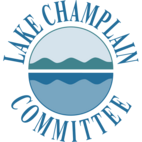Cumberland Bay De-listed

Cumberland Bay is no longer considered a hazardous waste site thanks to LCC advocacy and the clean-up actions by New York's Department of Environmental Conservation over a decade ago. Photo by NYStateparks.com
On March 27 Cumberland Bay was officially removed from the list of New York’s toxic Superfund sites. De-listing represents the culmination of work undertaken over a decade ago, spearheaded by LCC. The original listing came about because of an accumulation of PCB-laden sludge in the bay. The sludge was directly deposited prior to the 1973 construction of the wastewater treatment facility in Plattsburgh. PCBs in the sludge had been used as an ink-carrier in copy paper produced by Vanity Fair Paper Company and later Georgia Pacific after the companies merged.
The PCB bed in Cumberland Bay was discovered following the first lake-wide toxic contaminant study, a project initiated following substantial advocacy by the Lake Champlain Committee (LCC). LCC then championed the clean-up strategy to remove the PCBs. The Environmental Protection Agency’s maximum allowed contaminant level for PCBs is 50 parts per million. By comparison, the Cumberland Bay sludge had PCB concentrations as high as 1,850 parts per million. Between April of 1999 and October of 2000, over 140,000 tons of contaminated paper sludge were dredged from a 57-acre area of the bay. Wastes had to be shipped to Buffalo for incineration while less hazardous material was landfilled in Quebec.
PCBs can cause cancer as well as alter the nervous, reproductive, immune, and endocrine systems. For many years, the New York State Department of Environmental Conservation had warned anglers that consuming yellow perch, brown bullhead, or American eel caught in Cumberland Bay posed a risk to their health. Last summer, perch and bullhead were removed from the list and are now considered safe to eat.
